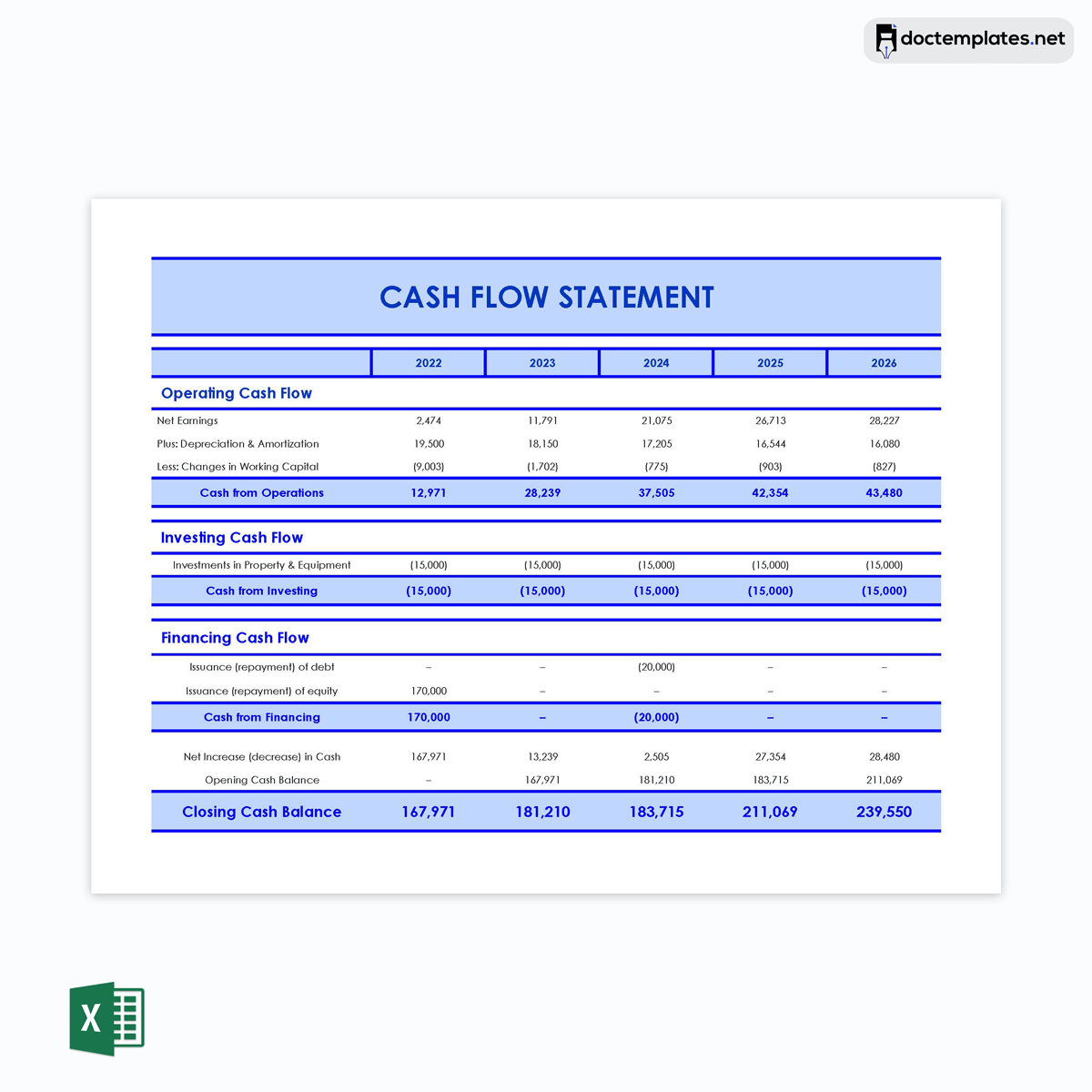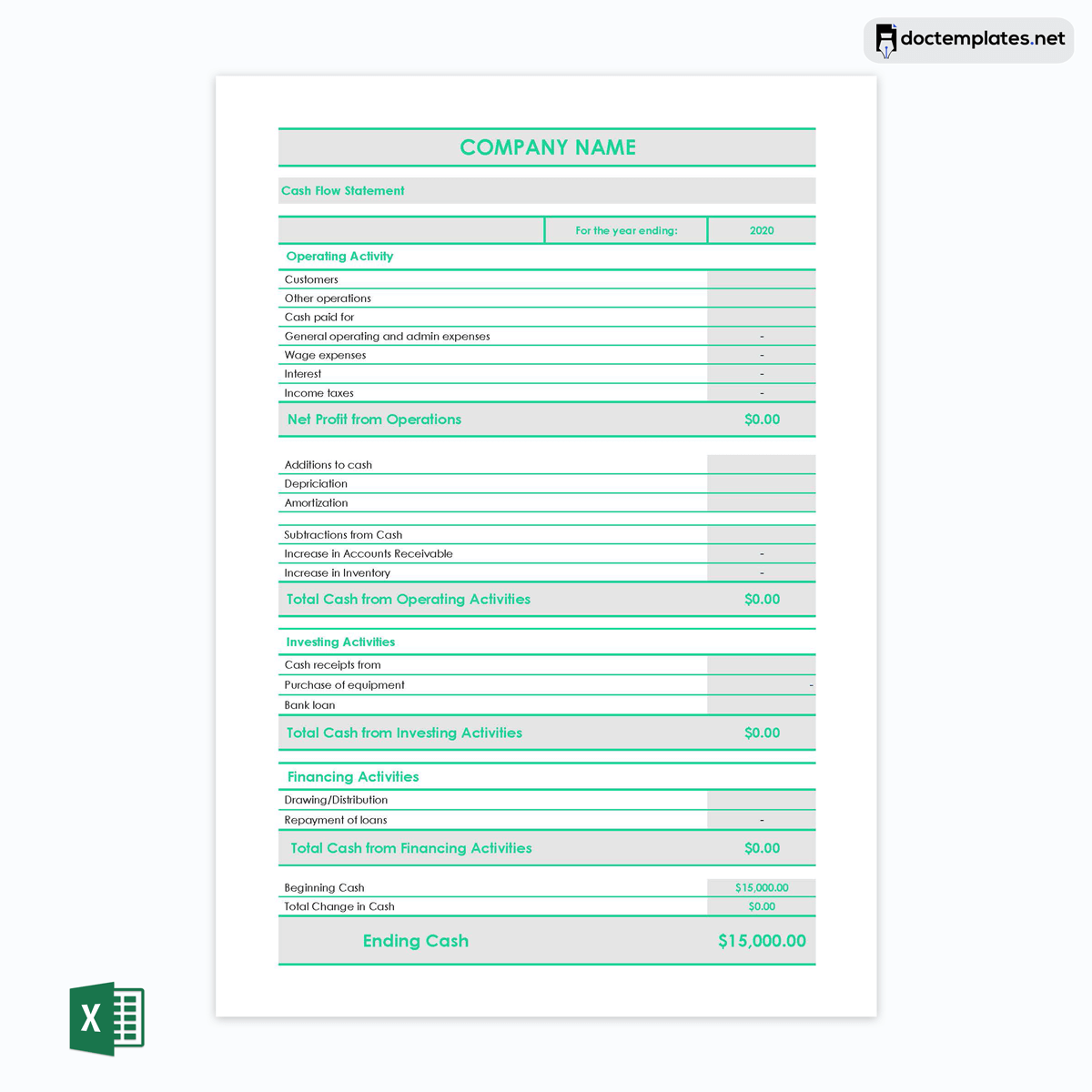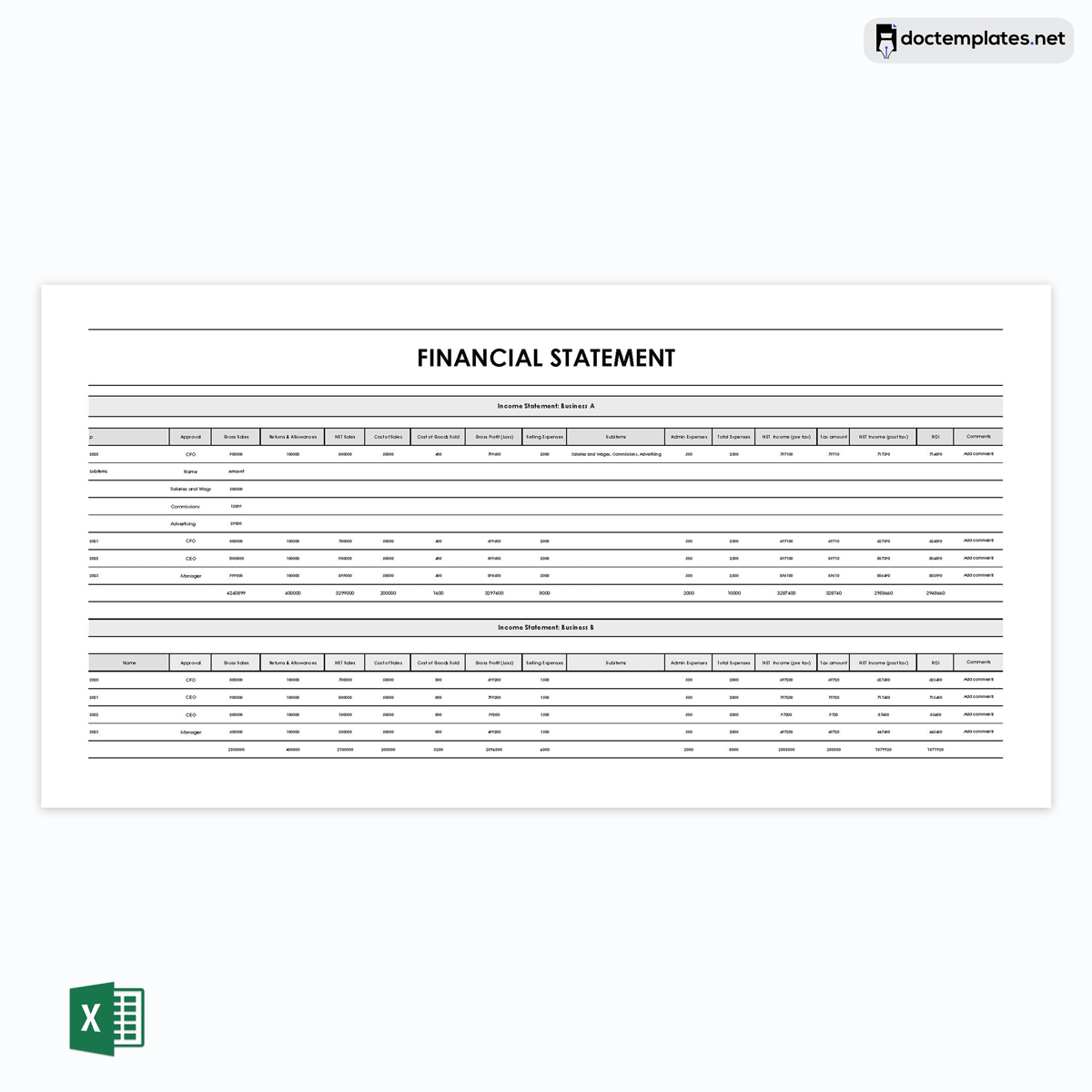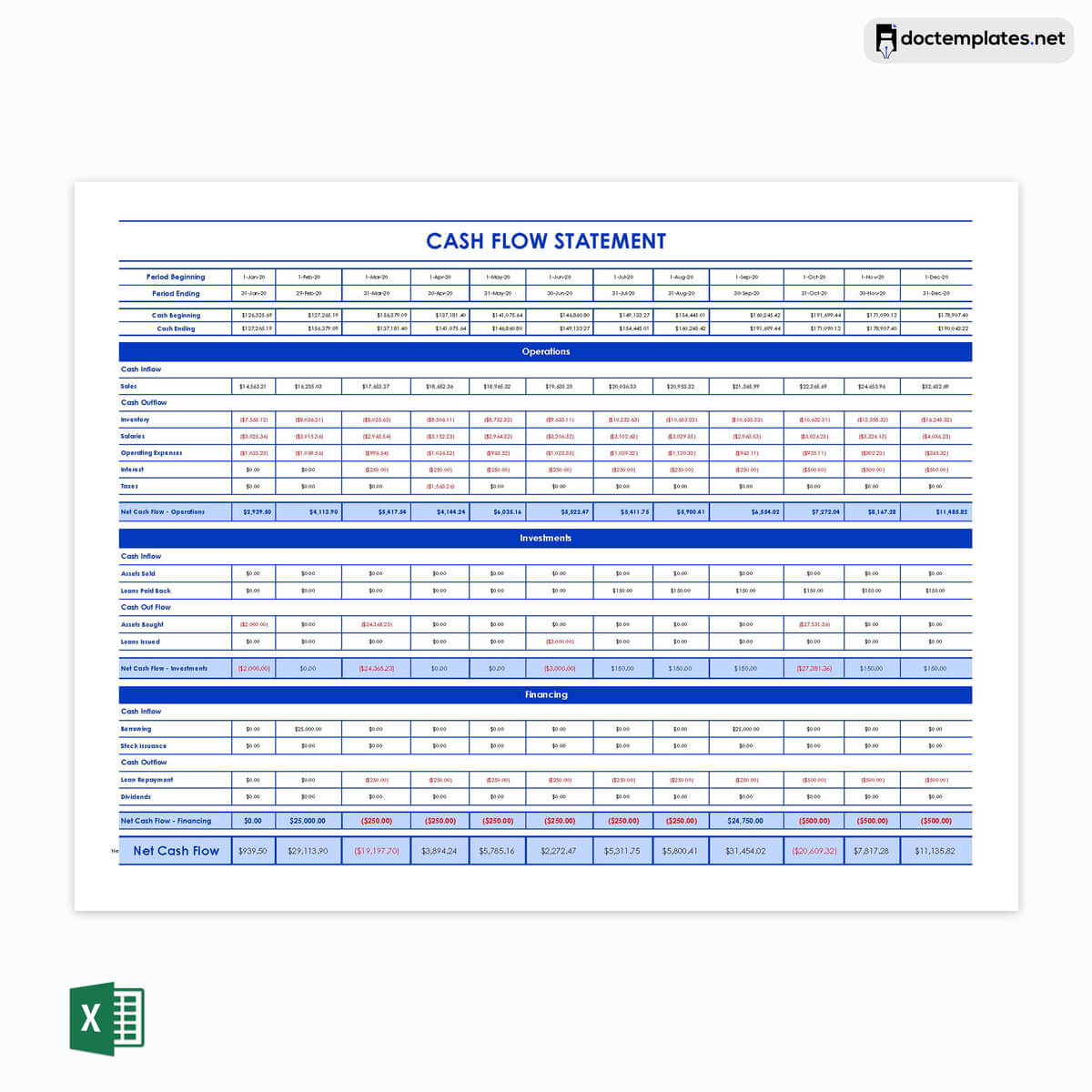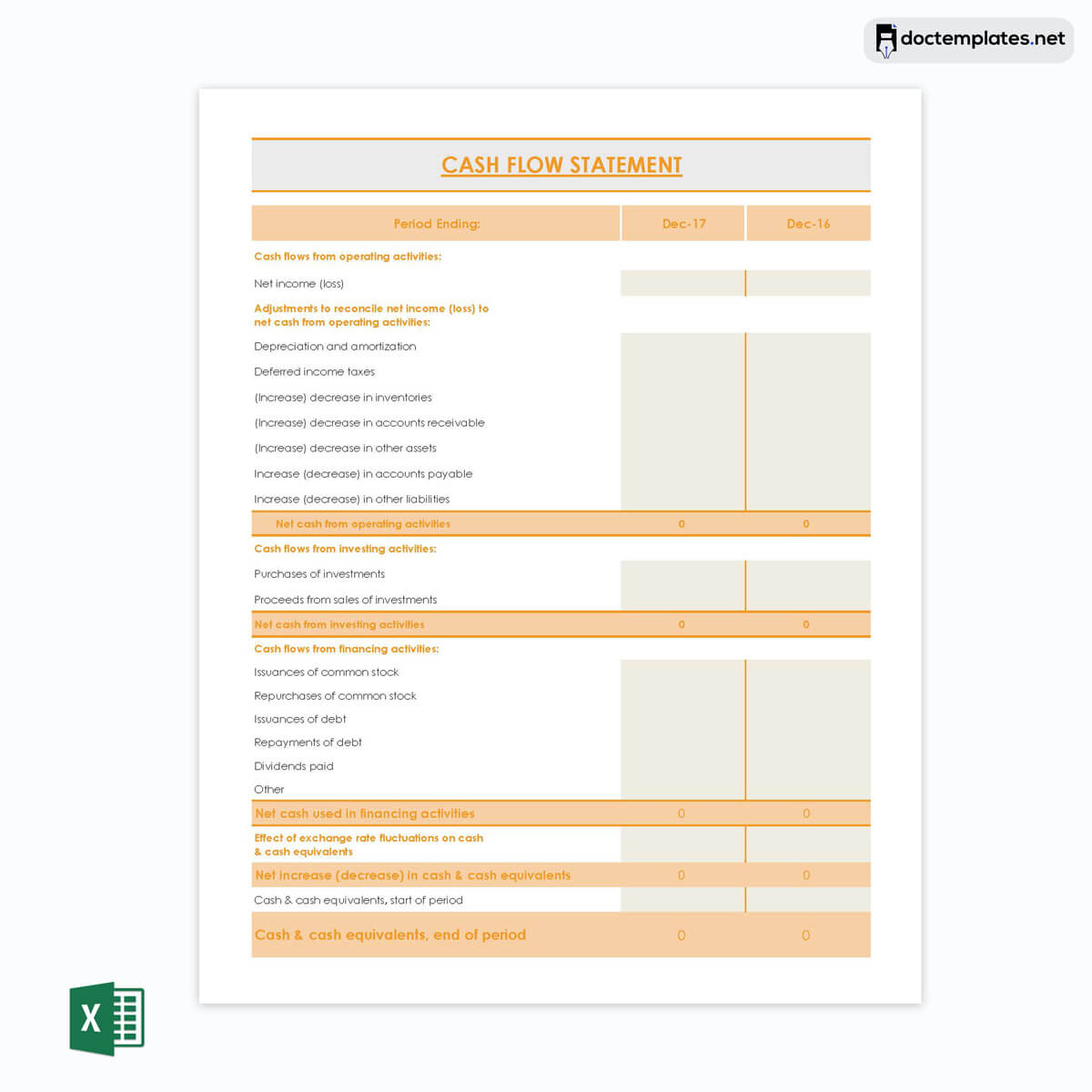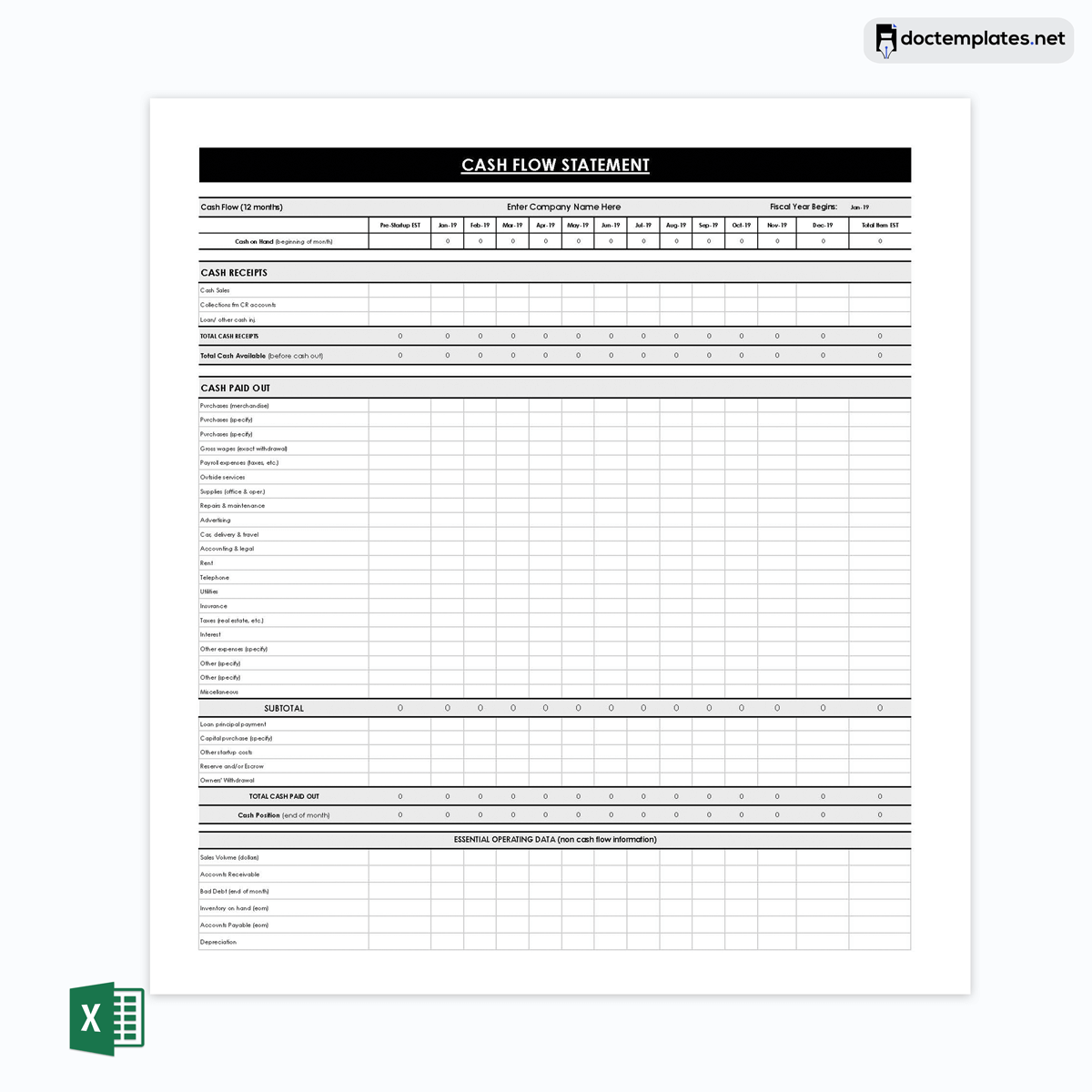A cash flow statement is a detailed summary of how cash and cash equivalents (CCE) are generated and spent in a company or business.
The key components of a cash flow statement are operations, investments, and financing. Understanding a company’s cash inflows and outflows is important to determine its financial health. A financially healthy company generates enough CCE to fulfill its operating expenses and debt obligations. The primary financial statements in any company are a cash flow statement (CFS), a balance sheet, and an income statement.
This financial document has a wide range of uses. Primarily, it is used to manage a company’s cash and cash equivalents. A company can analyze the document and strategize on generating more cash or lowering cash outflows. Creditors use the document to determine if a company’s liquidity (readily available cash) is sustainable enough to finance its operations and debts. Investors also rely on a CFS to determine a company’s profitability and financial status, key factors for determining whether a company is worth investing in. Generally, a CFS can be referred to when making different huge financial decisions within a company.
This article will comprehensively discuss creating a cohesive template for making a cash flow statement in Excel. It will also discuss other need-to-know details, such as the components and structure of a cash flow statement.
Cash Flow Statement Templates
Following are the cash flow statement templates that you can download for free:
Methods to Calculate Cash Flow Statement
Two methods are used to calculate a cash flow statement for business or personal use; the direct and indirect cash flow methods. You can use either, depending on your preference and situation. The method you choose does not influence the accuracy of your CFS if conducted accordingly.
Direct cash flow method
This method calculates the cash movement by adding all cash payments and receipts. Cash payments include money paid to suppliers and salaries. This method also determines cash flows by calculating the net increase/decrease balances of different asset and liability accounts.
Indirect cash flow method
The indirect cash flow technique adds or subtracts non-cash inflows and outflows from the net income. These inflows and outflows can be obtained from the increase/decrease in asset and liability accounts from one fiscal period to the next. Examples of non-cash transactions include taxes, prepaid insurance, accounts receivable, inventory, etc.
The difference between the two approaches is that with the direct method, the actual cash inflows and outflows must be known for calculations. However, you do not have to know the actual inflows and outflows to undertake the indirect method. Cash flows are calculated using the net income recorded in the income statement and the increases and decreases in accounts found in the balance sheet.
Key Factors to Consider Before Creating a Cash Flow Statement Template
Before creating a template for a cash flow statement, several key factors must be considered to ensure that the template is effective and meets your business needs:
- Firstly, it’s important to understand the purpose of a cash flow statement and how it is used in financial analysis. A cash flow statement shows the cash movement in and out of business over a specific period. It is a crucial tool for managing cash flow and making financial decisions.
- Secondly, it’s important to consider the format and structure of the template, including the categories of cash flows to include, such as operating activities, investing activities, and financing activities. The template should also be easy-to-understand, with clear instructions for entering data and calculating cash flows. Additionally, it’s important to ensure that the template is flexible enough to accommodate changes in the business, such as new investments or changes in financing arrangements.
- Finally, it’s important to consider the details required in the template, depending on the business’s and its stakeholders’ needs. A well-designed template for a cash flow statement can provide valuable insights into a business’s financial health, so carefully considering these factors is essential to ensure its effectiveness.
Creating a Cash Flow Statement Template in Excel: A Guide to its Structure
You can create an Excel template for your company’s cash flow statements. It may appear difficult initially, but you can produce your document with a proper detailed guide.
Below is a guide on creating a functional template with all the key components that can be used to calculate CCE movements in a company:
Step 1: Create an excel worksheet and add the title
Firstly, launch Excel and create a new blank workbook. Select the first row to column N, go to “Merge & Center,” and merge the cells. Use this section to provide the cash flow title. You can name the cash flow as follows, Cash Flow Statement 2022-2023. Repeat for the second row up to column N and merge. Use this space to record the name of your company – e.g., XYZ Company.
Tip: Skip a line to separate the different sections of the template.
Step 2: Indicate the reporting period
Secondly, the 3rd and 4th rows indicate (the financial period) Period Beginning and Period Ending, respectively. These spaces are meant to capture the beginning and end of each month or interval for the entire year. Skip a line, and in rows 6 and 7, provide the Cash Beginning (Opening Balance) and Cash Ending (Closing Balance). These figures are meant to show the cash balance you will be ending and beginning with for each reporting period. The closing balance of the first period is the opening balance of the subsequent period.
Step 3: Enlist the subcategories under operations, investments, and financing
Next, add the categories of cash flows (operations, investments, and financing) and the respective subcategories. Note that the three main categories are constant across different companies. However, the subcategories will vary depending on the type of business and operations undertaken by a company.
Make sure to highlight the category titles in a color that makes them stand out. You can also bold the names of the categories. Each category ought to have cash inflows and cash outflows. Refer to the data you collected to add the cash movements appropriately under each subcategory.
Common subcategories under the different categories are as follows:
- Operations – They represent cash movements resulting from day-to-day business operations. Cash inflow (sales) and cash outflows (inventory, operating expenses, salaries, taxes, interest). Go to row 10 and type the operations. Then start with the cash inflows in the row beneath and indicate sales as an inflow. Afterward, add a cash outflow subcategory and enlist the respective expenses in the subsequent rows.
- Investments – They represent money made or incurred due to the company’s investments. Cash inflow (assets sold and loans payments received). To add this category, go to row 22 and type investments, followed by cash inflows in the row beneath. Enlist the revenue-generating investments. Then, add the cash outflow section and enlist the associated expenses under the company investments.
- Financing – They include transactions that involve cash movements from investors, banks, and shareholders. Cash inflow (borrowing and stock issuance) and cash outflow (loan repayment and dividends). To add the financing cash flows, go to row 32, type the term financing, and in the row beneath, indicate cash inflows. Enlist all the financing sources for the fiscal period. After creating the list, add the cash outflows associated with this category in the subsequent rows.
You can indent the different items under cash inflows and outflows to distinguish them from the subcategories. Move the cursor to the item name, go to “Alignment” in the toolbar, and click on the increase indent. Also, each category must have a “Net Cash flow” at the end. The net cash flow must be written as follows; Net Cash Flow – [Category].
After the net cash flow–financing section, add a placeholder in your template to record the total cash movements within the respective period. This section records your company’s total cash inflow or outflow within a specific period.
Step 4: Prepare and input the formulas
Then, you must add formulas to your template to make it functional. A cash flow statement simply requires basic addition and subtraction. Therefore, the “SUM” function is predominantly utilized. First, input the formula for net cash flow for the three categories – operations, investments, and financing.
Go to the first category (operations) and select the cell for the net cash flow. Type the formula “=sum(“ hold the shift key and select all the cells under the category, close the bracket [ ) ], and press enter. Repeat the procedure for the investments and financing sections.
Then, add the formula for the Net cash flow. Go to the “Net Cash Flow” cell, type “=sum(“ hold ctrl key and select the subtotal cash flow from the three categories, close the bracket, and press enter.
Now, add formulas for the cash ends. Go to the cash ending cell, type “=sum(, “hold the ctrl key, select the net cash flow and cash beginning cells, close the bracket, and press enter.
Step 5: Add multiple months
Next, to ensure that the cash ending of one month is the cash beginning of the next, go to the cash beginning cell of the second month, input “=” and then click the cash ending of the first month.
Then, you can use the copy-paste command to set all the formulas for the rest of the months. Hold the shift key and, select the cells from the cash ending of the first month to the net cash flow, copy the selection using CTRL+C. Then, move the cursor to the cash ending cell of the next, and paste using CTRL+V. The formulas will automatically be adjusted to suit the respective column.
Then, paste the formula into the remaining columns (months). You can copy the formulas by dragging the selection from the bottom where the (+) symbol appears.
Step 6: Format the rows and numbers and save the file
The next step is to format the rows and numbers to suit the data input of a cash flow statement. Select all the cells with numerical entries, and go to the “Number” section in the home ribbon. Click the dropdown menu, and select “More Format Numbers.” A pop-up window will appear; go to the “Number” option, then select the “Currency” category. From the drop-down menu, choose the currency symbol to be utilized when calculating the cash flow statement. Also, in the “Negative Numbers” subwindow, select the option with the red font and click “Ok.” This selection makes negative numbers in the statement to be visible.
Then, you can edit the different sections of the template to make your cash flow statement appealing and engaging. For example, you can fill different sections with unique colors to make it visually easy to navigate. Once you have finished editing the template, save it in a secure folder.
Step 7: Use your template to input figures
Lastly, once your template is ready, you can use it to calculate your cash flows. Input values in it accordingly. You should always include the negative (-) sign on cash outflows so that the formulas may work appropriately.
If you find the abovementioned method complex and time-consuming, you can always use premade templates to create your business or personal cash flow statement. Such documents have been provided on our site. The templates are free to download and are a faster approach to creating cash flow statements than crafting them from scratch.
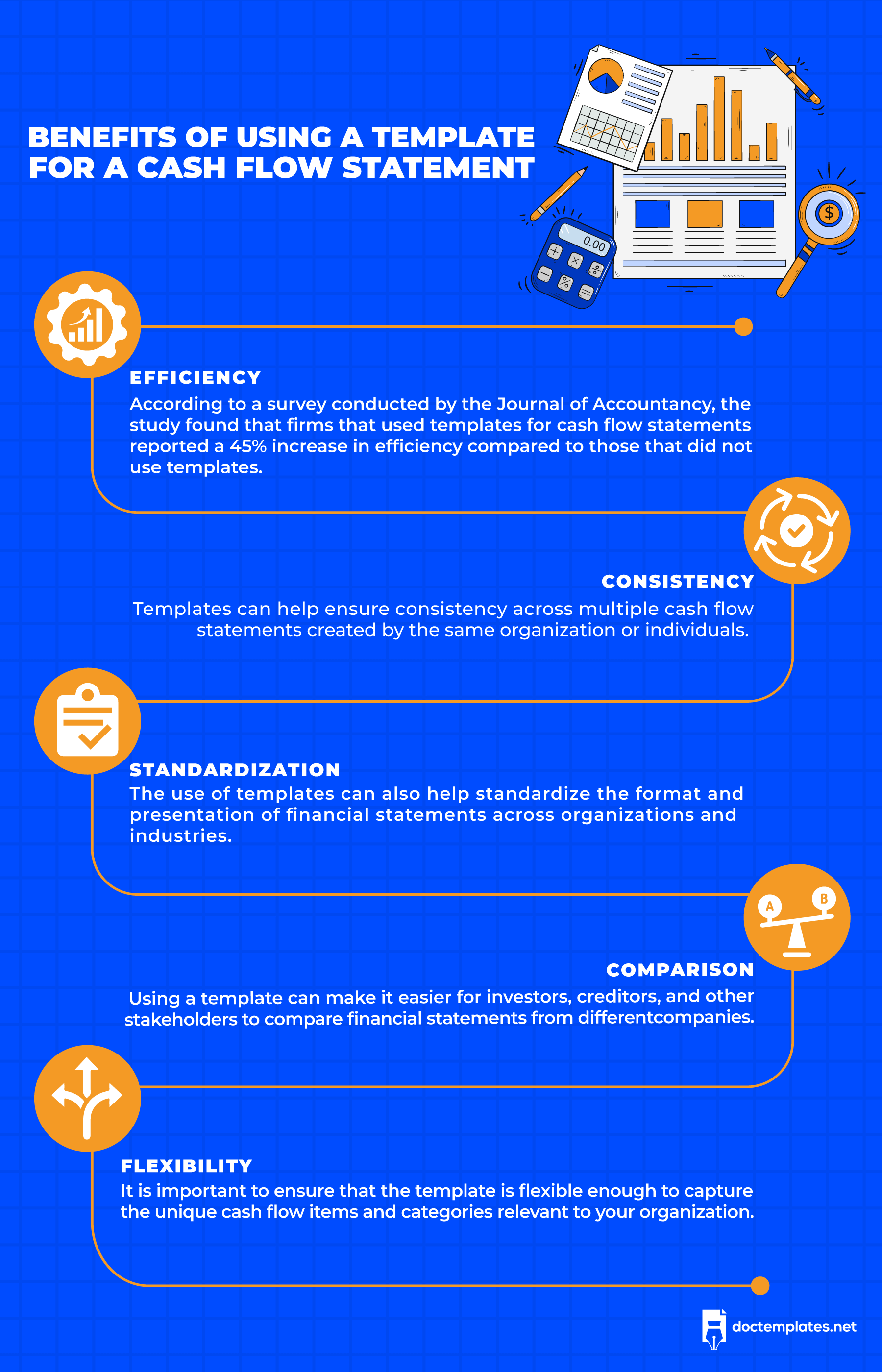
Key Takeaways
- A cash flow statement is a principal financial document that companies must prepare to practice proper cash management.
- It is easier to use a template as you can enlist recurrent cash inflows and outflows, thus saving time when creating cash flow statements.
- Always determine in advance which accounting method you will use, direct or indirect. This lets you determine which data you need to create a comprehensive cash flow summary.
- A cash flow statement can be used for business and personal accounting purposes.
